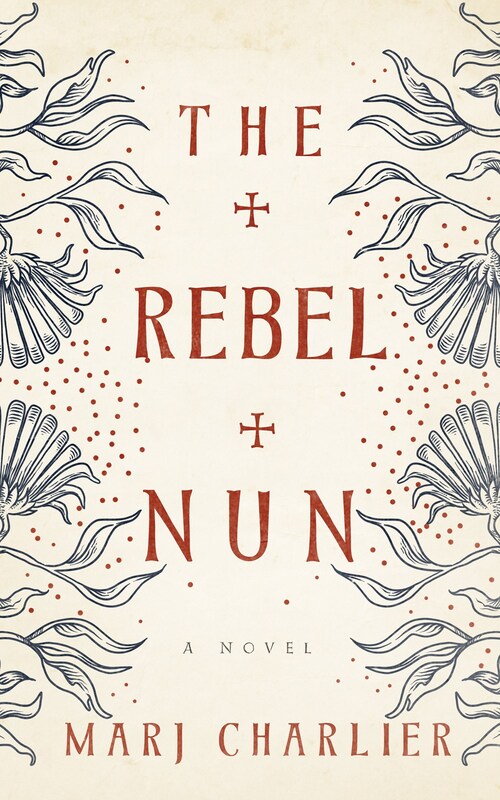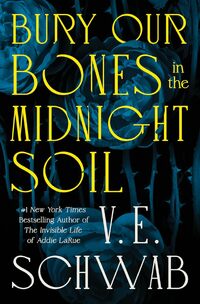As the winds of spring turn to summer, we look to the Middle Ages for this month’s round of stories. “Uneasy is the head that wears the crown,” Shakespeare wrote, and along with illuminating a long-vanished world, these novels also vividly demonstrate the danger within the glamor of those whose blood ties them a little too closely to a throne.

Proceeding chronologically, we begin with THE REBEL NUN by Marj Charlier, which sheds new light on fascinating and little-known sixth-century personality Clotild. While a (not surprisingly) negative picture of the historic Clotild is painted in historian Gregory, Bishop of Tour’s, HISTORY OF THE FRANKS, which describes the “bloody rebellion” of thirty nine nuns led by Clotild, Charlier’s novel depicts the events as they might have been from Clotild’s point of view. The illegitimate daughter of King Charibert I and potential heir to the throne (in a time where illegitimate children were not necessarily banned from inheriting,) Clotild joins the Monastery of the Holy Cross to protect her from the possibility of assassination. Such recourse was not unusual; in an age where a woman’s choices were marriage, prostitution or the cloister, abbey walls sheltered many women not drawn there mainly by a religious calling. Raised as a healer and natural leader, Clotild believes she will become the next abbess; instead, the bishop of Poitier appoints his own choice, the lazy, glutinous, cruel Lebovar, who steals from the abbey and allows the bishop to cut back their supplies of fuel and food until the nuns are threadbare and starving. Unable to find resolution with the bishop, censured for not submitting to their conditions with humility and obedience, Clotild ultimately decides to lead a pilgrimage of nuns to beg her royal relatives to intercede. When they are met by the bishop’s mercenaries, an armed clash ensues that will doom their mission and forever blacken Clotild’s name. Set in an era where the Catholic Church is the only force holding society together after the fall of the Roman empire, when its beliefs, institutions and rules about clerical celibacy are not yet set, Charlier’s emphasis on Clotild’s rebellion against “patriarchal” power and the “subjugation of women” may be a bit too twenty-first-century. But her attempt to redeem the reputation of a vibrant personality who at heart wanted only justice and the return of her order to a life of prayer and service is laudatory and illuminating.

Another child of turmoil and conflict who began as daughter to a claimant of a throne is the heroine of QUEEN HEREAFTER: A NOVEL OF MARGARET OF SCOTLAND by Susan Fraser King. Brought up at the religious Hungarian court, Margaret believes her destiny is to become a nun. But after her exiled father is called back to England to claim the throne, only to die before he can do so, the whole family must flee after the successful invasion of England by William the Conqueror in 1066. They end up shipwrecked in Scotland, where Margaret’s brother Edgar seeks to gain the support of warrior-king Malcolm in his bid to take the English throne by offering Margaret to be Malcolm’s wife. Though initially dismayed at the prospect of wedding the rough barbarian king, the marriage turns out to be resoundingly successful, a genuine love growing between the pious, charitable Margaret, who feeds and clothes the poor, educates girls, and brings worldliness and refinement to the rough Scottish court, and her fierce husband. Margaret’s story intersects with and is illuminated by that of the fictional Eva, bard and stepdaughter of former Scottish King Macbeth whom Malcolm vanquished, who is brought to court as a hostage to guarantee the good behavior of Lady Macbeth. But Eva is also a spy charged with assisting in the downfall of Malcolm and the Saxon queen to whom she has become an unlikely friend. How Margaret reacts when Eva’s treachery is revealed provides another revelation of the character of this woman whose union with Malcolm is the origin of the Stuart line of Scottish kings and whom history will deem a saint.

We jump ahead to the world of twelfth-century France, with its kings, counts, bards, nuns, falconers, noblemen and commoners, in Francesca Stanfill’s THE FALCON’S EYES. The fictional Isabelle, Stanfill’s protagonist, a rebellious sixteen-year-old keen for adventure, is wed in an arranged marriage to the rich, charismatic Gerald, making her Countess Isabelle de Meurtaigne. Despite the demands of running the household of a wealthy nobleman, Isabelle becomes increasingly disenchanted with her marriage to the controlling and volatile Gerald. After miscarriages and the deaths of infant children, having failed to give him the male heir he craves, Gerald finally arranges the divorce Isabelle seeks, freeing her to join the community at the fabled Fontevraud Abbey. There she finds peace and purpose in tutoring the young women sent to be educated. But she still yearns for adventure—and finally gains it when she is summoned to attend the court in exile of her longtime heroine, Elinor of Acquitaine. A story of one determined woman’s search for her true calling and identity, Stanfill’s novel gives us along the way a vivid picture of life in the Norman courts of France and England and a famous French abbey.

We end with the story of another princess, Joan of Kent, (narrated, in an interesting twist, by the ghost of her executed father) in Colin Falconer’s A VAIN AND INDECENT WOMAN. Joan suffers from the instability of having royal blood all her life. She’s a young child when her father, Edmund of Woodstock, first Earl of Kent, younger son of Edward I and half-brother to reigning King Edward II, is hanged. She’s first a captive, incarcerated with her mother and brothers, then viewed as a political pawn by her cousin the king, who plans to marry her to a French ally in his campaign to win back continental territory. In the interim, the thirteen-year-old Joan falls in love and secretly marries Sir Thomas Holland, a knight in Edward’s army. When the French campaign fails, the king decides instead to honor the Earl of Salisbury’s request that the princess be married to his heir, William of Montecute. Though Joan protests she is already wed, on orders of the king, the wedding goes forward. For ten years, defying her family and the king, Joan holds herself apart from William, doing all she can to have annulled the bigamous marriage on which her reputation as an “indecent woman” was founded, finally triumphing when a papal commission determines her first marriage to be valid. But her life with the knight to whom she was true for so long will be short-lived. After his death, an even bolder figure steps from the shadows to claim her hand…her childhood friend and long admirer, the Black Prince. Falconer’s novel of Joan’s world is rich in detail of the tangled politics and alive with vivid description of life in 13th century England.
Ready to savor one of these tales of royalty from the distant past (and be grateful your own commoner’s head is secure on your body?) Any one of them will carry you into summer riding the bold and beguiling winds of the past.
Real, intense, passionate historical romance
Award-winning romance author Julia Justiss, who has written more than thirty historical novels and novellas set in the English Regency and the American West, just completed her first contemporary series set in the fictional Hill Country town of Whiskey River, Texas.
A voracious reader who began jotting down plot ideas for Nancy Drew novels in her third grade spiral, Julia has published poetry and worked as a business journalist.
She and her husband live in East Texas, where she continues to craft the stories she loves. Check her website for details about her books, chat with her on social media, and follow her on Bookbub and Amazon to receive notices about her latest releases.
No comments posted.


 © 2003-2025 off-the-edge.net
all rights reserved Privacy Policy
© 2003-2025 off-the-edge.net
all rights reserved Privacy Policy